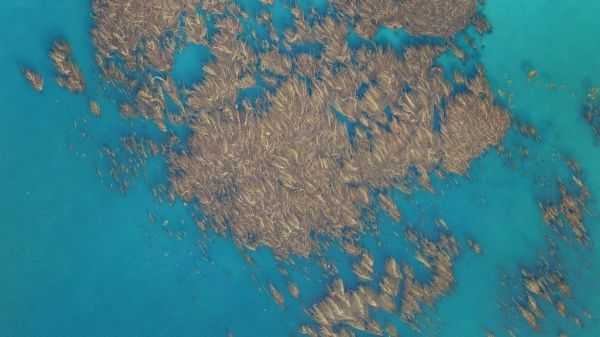The macroalga giant kelp, which is an iconic and important ecosystem-structuring species found off the coast of California and many other coastlines, can grow 100-feet long within 1-2 years.
Now, researchers using novel remote sensing observations have found that different factors may bear on the spatial growth dynamics of the Macrocystis pyrifera kelp, which is the largest species of algae in the world.
Researchers studying the giant kelp in the Santa Barbara Channel off the coast of California, have found that “spatiotemporal patterns of physiological condition, and thus growth and production, are regulated by different processes depending on the scale of observation,” according to Nutrient availability and senescence spatially structure the dynamics of a foundation species, published in the Proceedings of the National Academy of Sciences of the United States of America (PNAS).
“Depending on your spatial scale of observation—whether you are looking at kelp forests regionally or really honing in on a specific local area—the patterns that manifest at these scales may be indicative of different drivers,” said lead author Tom Bell, assistant scientist in the Woods Hole Oceanographic Institution’s Department of Applied Ocean Physics & Engineering.
“On a regional scale for areas larger than one kilometer, seawater nutrients were related to the physiological condition dynamics of kelp. However, on local scales of less than one-kilometer, internal senescence processes related to kelp canopy age demographics were related to the patterns of biomass loss across individual kelp forests, despite uniform nutrient conditions,” said Bell. Senescence is the progressive and irreversible deterioration in an organism’s physiological performance.
Read more at: Woods Hold Oceanographic Institution
Giant kelp canopy showing fronds with varying physiological condition. Lighter colored senescent fronds contain less chlorophyll pigment and are generally older than darker frond with higher chlorophyll content. (Photo Credit: Tom Bell, © Woods Hole Oceanographic Institution)


